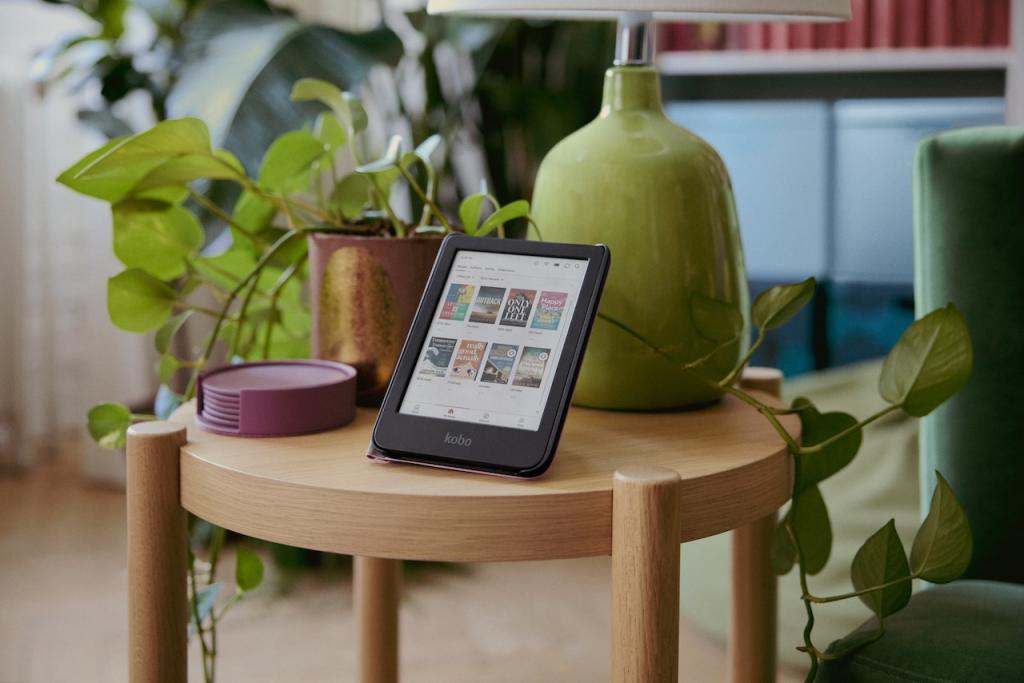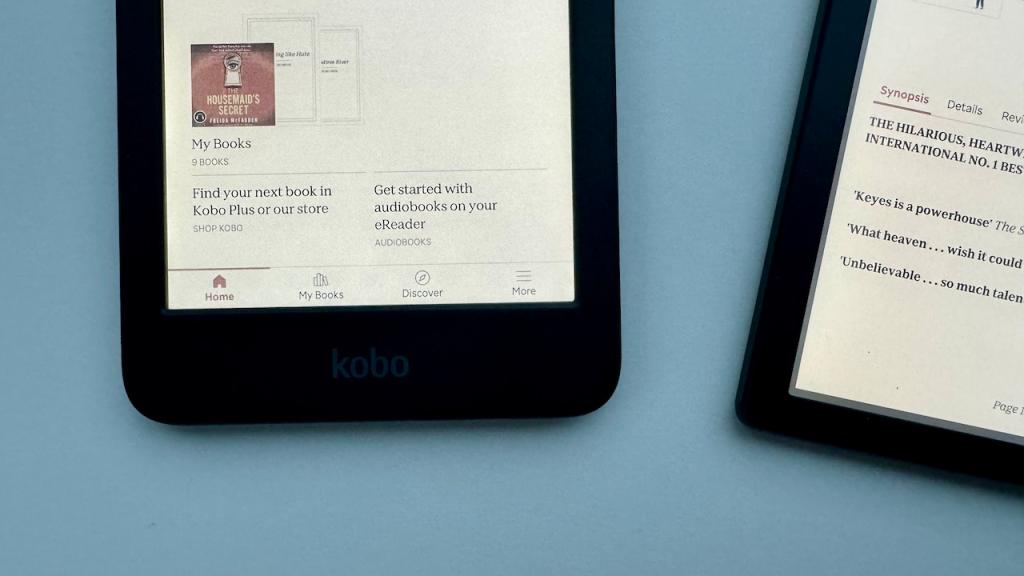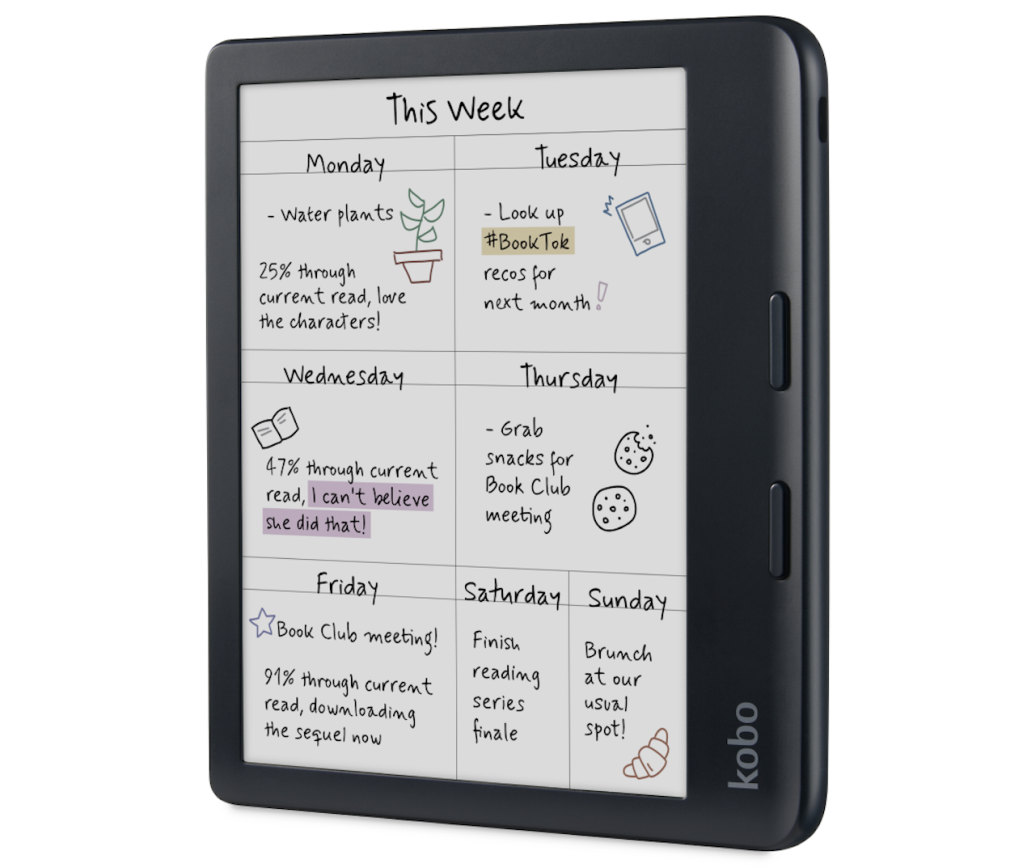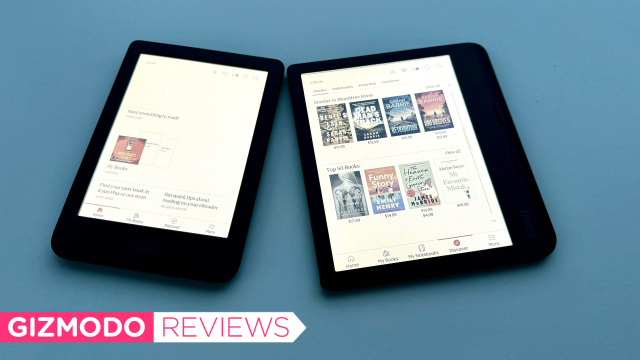EReaders are great and I hope the person who invented eInk is living their best life. eReaders aren’t for everyone, some people prefer paper and that’s ok, but they’re a godsend for people who like to bring multiple books with them, live in apartments, or who can’t physically make it to the library but still want to be able to read as much as possible. Kobo has just made eReaders a bit better by introducing some colour models, and I am frankly obsessed. I’ve spent a week or two with the new Kobo Libra Colour and Kobo Clara Colour, and here’s how I fell in love with them.
What’s new?
Well, colour. That’s about it. They have colours now. What surprised me is that colour didn’t add much to the price. The Kobo Clara BW is $239.95, vs the Kobo Clara Colour for $259.95, that’s $20 for a more colourful screen. The Kobo Libra has a bigger jump, likely due to the larger screen, with the black and white Libra 2 version selling for $319.95 and the colour model selling for $359.95. That extra inch of screen goes for quite the premium.
From what I can tell, they’re exactly the same, aside from the addition of colour and more definition to the screens, except for the Libra colour which adds Google Drive and Dropbox support.
| Kobo Libra Colour | Kobo Clara Colour | |
| Display | 7″ E Ink Kaleido™ 3 display with FastGLR and Dark Mode 1264×1680 300 PPI—black-and-white content 150 PPI—colour content | 6″ E Ink Kaleido™ 3 display with FastGLR and Dark Mode 1448 x 1072 300 PPI—black-and-white content 150 PPI—colour content |
| Storage | 32GB | 16GB |
| CPU | Dual 2.0 GHz | Dual 2.0 GHz |
| Connectivity | WiFi 802.11 ac/b/g/n (i.e. dual band, 2.4 and 5 GHz), Bluetooth® wireless technology, and USB-C | WiFi 802.11 ac/b/g/n (i.e. dual band, 2.4 and 5 GHz), Bluetooth® wireless technology, and USB-C |
| Compatibility | Google Drive & Dropbox and compatible with stylus | |
| Battery | 2050 mAh, weeks of battery* *A single charge on the eReader lasts up to 40 days, based on 30 minutes of reading per day with the front light at 30% brightness and WiFi and Bluetooth® wireless technology off. | 1500 mAh, weeks of battery* *A single charge on the eReader lasts up to 42 days, based on 30 minutes of reading per day with the front light at 30% brightness and WiFi and Bluetooth® wireless technology off. |
| Waterproof | IPX8 – up to 60 mins in 2 metres of water | IPX8 – up to 60 mins in 2 metres of water |
| Front Light | ComfortLight PRO – Adjustable brightness and colour temperature for blue light reduction | ComfortLight PRO – Adjustable brightness and colour temperature for blue light reduction |
| Dimensions | 144.6 x 161 x 8.3 mm and 199.5 grams | 112 x 160 x 9.2 mm and 174 grams |
| Supported Formats | 15 file formats supported natively (EPUB, EPUB3, FlePub, PDF, MOBI, JPEG, GIF, PNG, BMP, TIFF, TXT, HTML, RTF, CBZ, CBR) | 15 file formats supported natively (EPUB, EPUB3, FlePub, PDF, MOBI, JPEG, GIF, PNG, BMP, TIFF, TXT, HTML, RTF, CBZ, CBR) |
| Languages | English, French, French (Canada), German, Spanish, Spanish (Mexico), Italian, Catalan, Portuguese, Portuguese (Brazil), Dutch, Danish, Swedish, Finnish, Norwegian, Turkish, Japanese, Traditional Chinese, Polish, Romanian, and Czech. | English, French, French (Canada), German, Spanish, Spanish (Mexico), Italian, Catalan, Portuguese, Portuguese (Brazil), Dutch, Danish, Swedish, Finnish, Norwegian, Turkish, Japanese, Traditional Chinese, Polish, Romanian, and Czech. |
What’s colour good for?

Answering this question makes me feel like we’re back at the introduction of colour TVs, it feels so quaint. But also, as someone who almost exclusively prints in black and white, most people will not need colour for reading their novels. Colour is a nice to have, but not an essential if you’re just re-reading Pride and Prejudice or diving into War and Peace (kidding, the only reason to read War and Peace is to make sure other people see you reading War and Peace. You’re doing that in hardback).
But colour eReaders will be essential for people who read comics, graphic novels, and textbooks. If you pair the Libra Colour with a stylus, you can mark-up essays and books with colour-coded notes and graphs. I rely heavily on a Kindle Scribe and a Kobo Eclipsa 2E for making work notes, because it’s nice to make notes on a screen with texture, and a device that isn’t filled with the distractions of the entire internet.
But Alice, why do you love Kobo so much?

Thank you, I’m so glad you asked! Most of the main brands of eReaders have extremely similar technologies. They all have pink and a variety of buttons, and link to proprietary stores. The main difference is that Kobos can connect to your local library and allow you to borrow library eBooks from anywhere. Granted, the book also has to be available in the Kobo store, so you don’t have the full collection at your fingertips like you would on a phone or iPad. But being able to finish a book, return it, and borrow another one from the comfort of your bed without also accidentally falling down a social media spiral is one of life’s little pleasures.
If you’re not a member of your local library because you’re worried about fines (most of those have been abolished now), or you just don’t like the vibe for some reason, you might not know about everything your library has to offer. That’s ok. Borrowing ebooks is a great way to read books for free while still financially supporting the author, AND supporting your local library, which is such an important community resource.
In 2024, libraries aren’t just quiet places with daunting shelves of paper books. They have maker spaces where you can use 3D printers, music studios, creator booths and computers for free. You can borrow tools. They have free streaming services, and digital subscriptions to magazines and newspapers. They have huge ebook collections. Plus, the more you interact with your local library, the more funding they get to do cool stuff.
Anyway, yay Kobo for connecting to libraries and letting you borrow library books. It’s truly the number one reason to buy a Kobo, and you’re missing out if you’re not taking advantage of it.
Who needs the Kobo Libra Colour and the Kobo Clara Colour?

It’s great for everyone who wants a new eReader. Sure, they’re a bit more expensive than the black and white models, but if you have the cash, I was surprised by how much having the full-colour novel covers added to my experience. The Clara and Libra 2 were already fantastic eReaders in their categories, they’re now just a bit better.
But they’re particularly a must-have for digital comics enjoyers and students who use textbooks on eReaders.
If you already have a Clara or a Libra 2, and you don’t read comics or need colour textbooks, you don’t need to run out and upgrade immediately. You’re not missing out on anything big.
For everyone else, though, this is just really neat.
The Kobo Clara is $259.95 and the Kobo Libra Colour can be purchased for $359.95.
